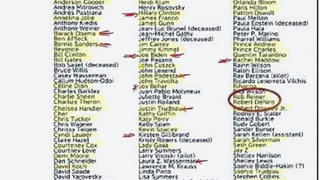
By Dana Ford and Maarten Schenk
Does "new evidence" on voting systems in Antrim County, Michigan, give a full and complete picture of how tabulation machines and software work? No, that's not true: The evidence, which consists of a video showing that it is theoretically possible to swap votes, is missing important information. It ignores the safeguards in place to protect against fraud, including hand counts and audits, and omits explanations provided by election officials.
Michigan uses paper ballots, which have been preserved, meaning the accuracy of voting machines can be verified. Since the 2020 election, the state completed more than 250 audits, including a hand-tally audit of all the votes cast for president in Antrim County. According to the Michigan secretary of state's office, "every one of them confirmed the integrity and accuracy of the 2020 general election."
The video appeared in a report (archived here) published by One America News Network (OAN) on May 4, 2021. The report, titled "Antrim County plaintiffs to introduce new evidence on voting systems," included a video of Jeffrey Lenberg, identified as a systems vulnerability expert, feeding ballots into a machine at the 32-second mark. He said at two minutes 21 seconds:
What we did is for the presidential race we swapped [Joe] Biden and [Donald] Trump votes. We did not change the senatorial race, and we swapped the congressional race.
Users on social media saw this title, description and thumbnail:
Antrim County plaintiffs to introduce new evidence on voting systems
OAN Newsroom UPDATED 10:00 AM PT - Tuesday, May 4, 2021 A new expert weighs in on the ongoing election related lawsuit in Antrim County,...
In the video, Lenberg feeds seven ballots into a machine -- two were marked for Biden, four for Trump and one for Jo Jorgensen. Later, when the machine printed a tally, the votes for the leading two candidates had flipped, showing four votes for Biden and two for Trump. Looking at a database, Lenberg said at six minutes 14 seconds:
The results now match the tape printout here, so when you do the canvass they will match, but they're not correct. They don't match the ballots.
Lenberg is an expert witness for the plaintiffs in an Antrim County lawsuit alleging fraud in the 2020 election. Attorney Matthew DePerno, who is leading the legal team for the plaintiffs, posted the OAN report on his website, along with the following introduction:
We have the proof that voting machines used in the 2020 elections can be compromised and votes easily transferred from one candidate to another. We can flip votes at the tabulator/precinct level. We can flip votes at the county level. The American people are losing their voice for the future of our democracy. We must fight together for free and fair elections.
The clear implication is that the ability to "flip" votes constitutes fraud.
Lead Stories contacted DePerno to ask whether the video was meant to describe a hypothetical possibility or something that he believes actually happened in the 2020 election. In an email, dated May 5, 2021, DePerno responded:
It is 100% factual and not hypothetical. There is nothing to 'fact check.' We put ballots in (4 Trump, 2 Biden, 1 Jorgenson). The results were 4 Biden, 2 Trump, 1 Jorgenson. That is a fact.
For an independent perspective, Lead Stories contacted Inti De Ceukelaire, a Belgian security researcher best known for reporting a vulnerability to Facebook in 2017 that later led to the leak of half a billion phone numbers. He said the video does not prove fraud; showing that voting machines can be configured in a variety of ways does not prove that they were set to manipulate data during the 2020 election. De Ceukelaire explained:
The only thing they are doing here is changing the positions on the paper where the scanner looks for the bubbles associated with each candidate. The voting machines don't read the text on the ballot. They don't read the names of the candidates.
He added:
Somewhere in the machine they have to store where the bubbles are located on the paper ballot. If you make this information hardcoded (i.e. unchangeable), you would have to build new voting machines for each election, which would be impractical because there are so many different elections. So, of course, these names and bubble locations can be reconfigured.
Stated alternatively, he said:
To me, what appears to be happening is literally what these machines are made to do. You have to be able to reconfigure these machines before each election.
In De Ceukelaire's estimation, then, the video does not show anything unusual, much less untoward. It shows that tabulation machines can be reconfigured -- which is true -- but the video is misleading because it leaves out important context. Not just anyone can reconfigure a voting machine. Besides the technical know-how, the person would need unfettered access.
Again, here's De Ceukelaire:
It's not like some random Joe can just walk up and reconfigure these machines by themselves and, on top of that, you also have all the paper ballots. They don't go away.
Finally, he said:
What they are actually showing here is how a vote-counting machine works, while deliberately omitting all other context about the procedures around it to make it seem like there is news value here. I would say they just read the user manual to see how these things work. People who work with voting equipment aren't in the least surprised by this.
According to the Michigan secretary of state's office, more than 250 audits have confirmed the accuracy of the state's 2020 election, including a hand-tally audit of all the votes cast for president in Antrim County. In a statement released in March 2021, Secretary of State Jocelyn Benson said:
We've responded to every question and claim and the evidence is clear. It is time for leaders across the political spectrum to tell their constituents the truth, that our election was the most secure in history, and the results accurately reflect the will of Michigan's voters.
The statement specifically addressed the situation in Antrim County, stating:
In addition to the hundreds of audits of local election precincts -- the majority of which were conducted by county clerks of both parties -- officials also audited every ballot cast for president in Antrim County and found that the Dominion machines used there accurately counted ballots throughout the county.
See here for the results of that hand audit, which -- confirming earlier results -- found that Trump carried the county by nearly 4,000 votes. Michigan uses paper ballots, which have been preserved, meaning the accuracy of voting machines can be verified.
Antrim has been at the center of voting fraud allegations ever since it initially reported incorrect unofficial results. State officials have said that was the result of human error, not a flaw in the technology. See here for a more detailed explanation from Benson's office.
Dominion Voting Systems has repeatedly defended its role in Michigan and, in particular, Antrim County. In a statement dated December 14, 2020, the company said:
There were no software 'glitches' that 'switched' votes in Antrim County or anywhere else. The errors identified in Antrim County were isolated human errors not involving Dominion.
Lead Stories has written about allegations involving Antrim County before. See here and here for those stories, which found that a cyber analyst did not prove that Dominion software was designed for fraud and that there is no evidence corrupted voting system software stole votes from Trump.
















